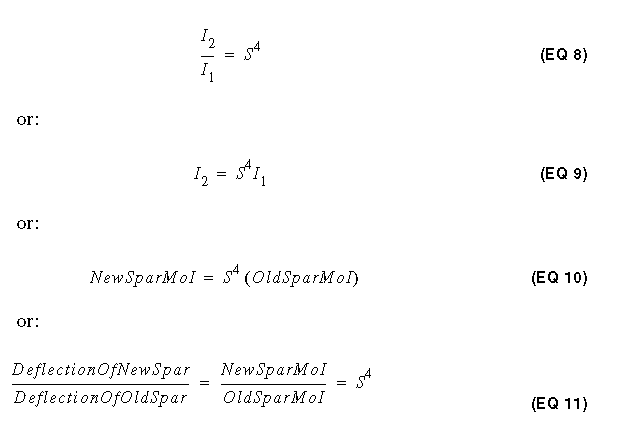Dave Lord's Scale Factor
Copyright (c), 1993-1995 Simo Salanne (Simo.Salanne@csc.fi)
Dave Lord's scale factor
describes the relation of
spars' relative stiffness
when a kite design is
scaled.
A derivation of the formula.
After the publication of my article"Mass-stab" in Drachen Magazin (2/93) and
English version of it in rec.kites archive ("Bending spars with a Coke can"), some
kite designers have contacted me and asked: "Why the relative stiffness is
proportional to the FOURTH power of the scale factor?"
The following derivation is based on correspondence with Dave Lord.
The derivation logic of
the formula is from Dave, my contribution was just to make the
layout.
I have not written a "scientific" paper for twenty years, please forgive me my
exercise quality. In 1995 I converted the document into HTML-format.
The frame of a kite is made of separate spars or beams.
In the following we have a look at a loaded beam, supported at two points.

According to the handbook
Maximum deflection is:

Where
E = modulus of material
and
I = moment of inertia.
If we make (our kite larger/smaller = ) the beam longer/shorter by a factor of S :

but want (the kite behave similarly) then the relative
deflection should be the same:

Substituting (EQ1) into (EQ3):

which simplifies to:

The area of a kite changes by the square of scale (S) and
the load (W) is proportional to the area:

substituting (EQ2) and (EQ6) into (EQ5):

which simplifies to:

Let's define:

For practical purposes we select a reference spar (e.g. K-75), which has the relative
stiffness Rref = 1. Other spar types are compared to it and their
stiffness is denoted by Rnew.
From (EQ11) and (EQ12):

Smooth Winds & Scaling.
Simo.Salanne@csc.fi











